It's a small exhibition, but a bit of a blockbuster. "Mondrian: The Transatlantic Paintings" focuses on a group of 17 paintings that the Dutch abstract artist Piet Mondrian (1872-1944) began (or, he thought, finished) in Paris or London before emigrating with the pictures to New York in 1940. There he altered them, adding "blocks and bars of primary color and occasionally of black that seemed to float and slide within the structure of black lines," writes Harry Cooper, associate curator of modern art at the Fogg Art Museum. Mondrian delighted in the music he heard in his new world and wanted to animate his paintings to give them, as he put it, "more boogie-woogie." The exhibition details how Mondrian made his boogie-woogie. Showcasing two years of intense technical and art-historical research by Cooper and Ron Spronk, associate curator for research at Harvard's Straus Center for Conservation, it applies to modern art fairly new investigative methods--x-radiography, stereomicroscopy, photography under ultraviolet or infrared light--heretofore employed by museums to discover that they have a Titian on top of their Bellini, or that what pretends to be a Titian was painted the day before yesterday.
 | 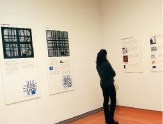 |
 | 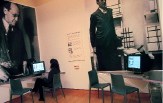 |
| The exhibition fills two galleries. Eleven paintings hang in one of them; in the other, above, wall texts and computer stations invite viewers to look inside the paintings' surfaces to see Mondrian creating. | |
| Photographs of exhibit space by Jim Harrison | |
What Spronk calls "forensic art history" can enlarge understanding and appreciation when applied to the work of a modern artist, as he and Cooper amply demonstrate. The exhibition runs at Harvard's Busch-Reisinger Museum through July 22 and at the Dallas Museum of Art August 19 through November 25. The catalog by Cooper and Spronk, Mondrian: The Transatlantic Paintings (Yale University Press, $50, cloth) will endure, but statically, by nature. The website (www.artmuseums.harvard.edu/mondrian), offers penetrating images, remarkable software, and interactivity, as do computer stations in the gallery--delivering a rich learning experience that only a computer could manage.
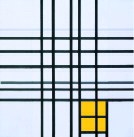 | 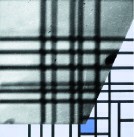 | 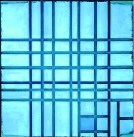 |
The images above of Composition No. 12 with Blue,1936-1942. Top left: A reconstruction of how the painting looked in the summer of 1937, based on a photograph taken in Mondrian's Paris studio that shows about three quarters of the painting, which is leaning against a wall. The next image is a detail of the photograph digitally adjusted to correct for perspective distortion and overlaid for comparison on the final 1942 state of the painting, far right, on loan from the National Gallery of Canada.
| ||
 | 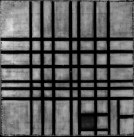 |  |
Other images, three of which are shown here, document the artist's decision-making process. In the bluish image, made underultraviolet light, older black lines fluoresce much more than lines added more recently. The next image, an infrared photograph, shows faint and stronger black lines painted early and late and not in the final version (as well as the stretcher of the canvas). Finally, an x-radiograph confirms that Mondrian, with a new thought, carefully removed white paint before adding the finishing black lines. | ||
| Mondrian images courtesy Harvard University Art Museums | ||




